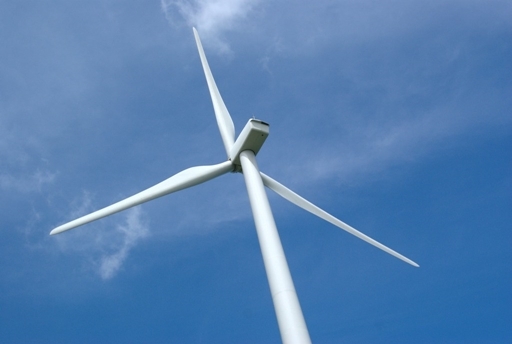“Renewable energy, like any new disruptive technologies, comes with tremendous opportunities as well as challenges.”
.
 Michael Moore’s latest documentary (with his lifetime collaborator Jeff Gibbs) challenges the renewable energy industry:
Michael Moore’s latest documentary (with his lifetime collaborator Jeff Gibbs) challenges the renewable energy industry:
‘Planet of the Humans’: a new documentary
Many a think-tank has welcomed it:
Hurry, See “Planet of the Humans,” Before It’s Banned | cei.org
There has indeed been quite a bruhaha:
Planet Of The Humans: A Scathing Exposé On The Sacred Renewables Sector | todayville.com
Planet of the Humans: Reviewing the Film and its Reviews | resilience.org
The trouble is, when you see massive wind turbine blades being buried, it does raise questions:
Not so green energy: Hundreds of non-recyclable fiberglass wind turbine blades are pictured piling up in landfill
- Indestructible wind turbine blades can’t easily be crushed, recycled or repurposed
- Instead they are hacked into pieces small enough for a flatbed and hauled to landfills
- The municipal landfill in Casper, Wyoming, is the final resting place of 870 blades
- Other landfill that accept the blades are in Lake Mills, Iowa and Sioux Falls, South Dakota
Not so green energy | dailymail.com
.
Why Thousands of Wind Turbine Blades Wind Up in Landfills | youtube.com
So, it is a problem:
Unfurling The Waste Problem Caused By Wind Energy | npr.org
Wind turbines will create 43 million tonnes of waste by 2050 | evwind.es
But there are ‘solutions’ out there:
‘Digital twinning could stretch wind turbine life by 25 years’ | rechargenews.com
For example:
Commentary: For retired wind turbines, we can find alternatives to landfills
Many have probably now seen the picture, shared widely on social media, of wind turbine blades being buried in a landfill in Wyoming. The picture highlights a legitimate challenge to wind energy, especially as costs continue to fall and deployment of wind increases across the country. Importantly those challenges, one of them highlighted here, are not a reason to walk away from the table.
We can find solutions.
First, it’s important to recognize that the cost of removing wind turbines at the end of their useful life is almost always included in the cost of the initial project. Developers are often contractually required to post the full cost to decommission turbines before a farm is even built. Taxpayers do not pick up the cost of taking wind turbines apart.
Second, between 85% and 90% of a turbine’s parts can be recycled or sold, including the foundation, tower, gear box, and generator. However, the turbine blades are typically constructed of fiberglass-reinforced plastics or carbon fiber, creating complex disposal and recycling requirements at the end of their useful life. With more wind turbine retirements impending, momentum to achieve fully recyclable turbines is growing. Vestas, a leading turbine manufacture, has committed to eliminate non-recyclable waste from the manufacturing, operation, and decommissioning of its turbines by 2040.
Recycling turbine blades in other parts of the world typically involves cutting and shredding the blades into a raw fiberglass material. This material can then be reused in manufacturing processes, turned into deck boards, warehouse pallets, weather resistant siding, among many other uses. As the amount of blades being retired begins to increase in the United States, we need to work toward an active solution to this problem. However, our country has never lacked for entrepreneurial spirit and a can-do attitude.
Often our message is that renewable energy, like any new disruptive technologies, comes with tremendous opportunities as well as challenges. As renewables, driven by consumer demand and strengthening economic advantages, increase their market share we need to have honest and informed discussions about the advantages and drawbacks of a technology like wind. Already in this case, startup companies are popping up around the country to take advantage of this challenge, and turn it to an opportunity.
Scott Coenen is the executive director of the Wisconsin Conservative Energy Forum, a non-profit organization dedicated to providing a voice for conservatives in the state’s energy policy debate.
Commentary: For retired wind turbines, we can find alternatives to landfills | energynews.us
photo: Wind turbine blades | Closer shot of the blades on one of th… | Flickr